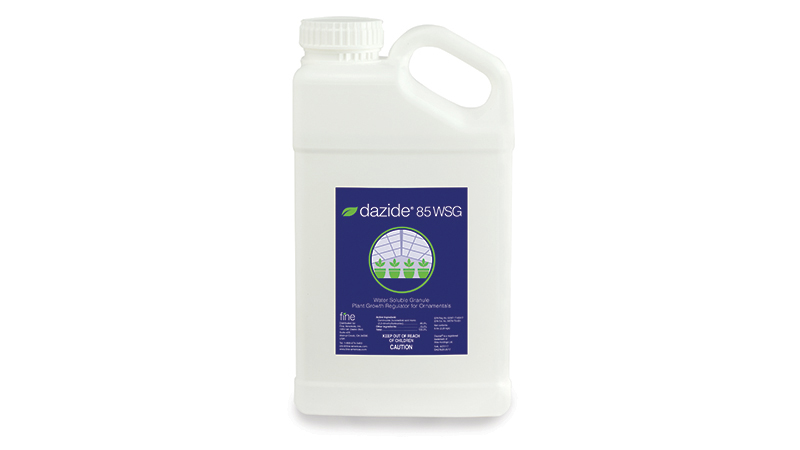Deep Freeze Ruins Floriculture, Nursery Crops
Effects of cold could linger for years
Freezing temperatures continue to crush San Diego County’s agricultural industry, say experts.
Portions of the county’s citrus crop could be lost for two years, and local avocado grove losses could be as much as $50 million already with no relief in sight. Several cut-flower nurseries said their plants may survive the frost, but the cold will delay their flowering until after Valentine’s Day, costing the industry millions of dollars in holiday sales. Some farms have workers standing idle as companies figure out whether they need them all or not for harvest.
But consumers shouldn’t worry about their Super Bowl guacamole. Avocado officials said plenty of fruit is available to keep price increases to a minimum.
Ed Shoemaker, a wax flower grower in Ramona, said all 20 acres of his crops are worthless because of the cold, the lowest temperatures he has seen since 1974. Wax flowers are flowering branches used in bouquets.
"There is no chance of recovering anything," he said. "It’s gone."
Nighttime temperatures are forecast to remain low, between 29 degrees and 39 degrees tonight and Friday night. On the weekend, night temperatures should remain above freezing.
Agricultural officials, farmers and nursery workers spent most of Wednesday out in fields and groves assessing damage. They estimated that 10 percent to 20 percent of the county’s avocado crop could be destroyed this year, and the effects could linger for two more years.
Officials said they wouldn’t know the extent of damage to avocados, citrus or flowers for a few days because damage from freezing can take time to appear.
The damage has been so extensive that state agriculture and emergency officials said it could lead to the county’s first cold-weather-related federal disaster area declaration in almost two decades.
Avocados were the county’s third-largest agricultural product last year, with sales of more than $251 million. Cut flowers were fifth with sales of more than $76 million. In 2005, agriculture contributed $1.5 billion to the local economy.
Eric Larson, executive director of the San Diego County Farm Bureau, said the total financial damage could be worse than the last frozen crop crisis in 1990.
"There has been lots of agricultural expansion," he said. "There could be more damage because people are possibly planting in places that are more susceptible to freezing."
In the winter of 1990-91, freezing temperatures destroyed $850 million worth of agriculture products throughout the state and eventually caused 32 counties, including Riverside and San Diego counties, to be declared federal disaster areas. California ranks second in the nation for federal disaster declarations with 71 since 1953, according to the Federal Emergency Management Agency’s Web site. Texas is No. 1 with 78.
When a region is declared a federal disaster area, federal funds and agencies can be tapped to help businesses affected by the disaster.
On Friday, Gov. Arnold Schwarzenegger declared all of California to be in a state of emergency in anticipation of the extreme low temperatures. With early statewide crop loss estimates in the $1 billion range, state emergency relief officials said they wouldn’t be surprised to see San Diego County involved in another California federal disaster declaration soon.
"It is not uncommon," said Steve Lyle, director of public affairs for the California Department of Food and Agriculture. "The state doesn’t have the funding to provide the support that is required."
Tomatoes, oranges, strawberries and other crops managed to avoid any long-term damage from the cold. Agricultural officials said this wasn’t the growing season for tomatoes or the county’s Valencia oranges. The California Strawberry Commission said that while there has been some damage to crops in Southern California, the cold might actually stimulate growth in the long term. Strawberries tend to bounce back from cold easier than other types of fruit, agricultural officials said.
Citrus grove owners and nurseries with cut flowers and bedding plants were frantically trying everything, from extensive watering to covering plants with frost-protection cloth, to save crops from further damage.
Although water turns to ice in cold temperatures, it releases heat in the process. That heat can sometimes be enough to keep flowers and other plants from freezing. For fruit, watering could cover the fruit in a protective coating of ice, possibly allowing it to be harvested later.
Mike Mellano, senior vice president of Mellano & Co. in Oceanside, said his company has gone from watering flowers three to four hours per night to watering them for 12 hours. He said it is worth the extra watering cost to keep his flowers alive.
"The value of the crop exceeds the cost of the water," he said.
The losses could get even worse for the county’s agriculture. Avocado officials said the fruit has trouble in temperatures lower than 30 degrees. The National Weather Service’s Forecast Office in Rancho Bernardo said nightly temperatures should be below that until the weekend. The weather could spell bad news for nurseries and citrus groves as well.
Scott Lenz, owner of S&R Flowers in Fallbrook, said he has lost three crops of flowers because of the cold. But he said somehow he will continue to grow flowers.
"I have no idea why I’m in this business," he said. "I must like pain."
(Source: Patrick Wright, North County Times)









